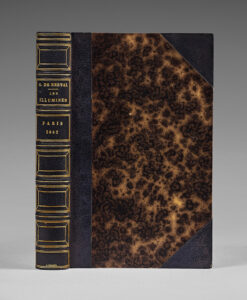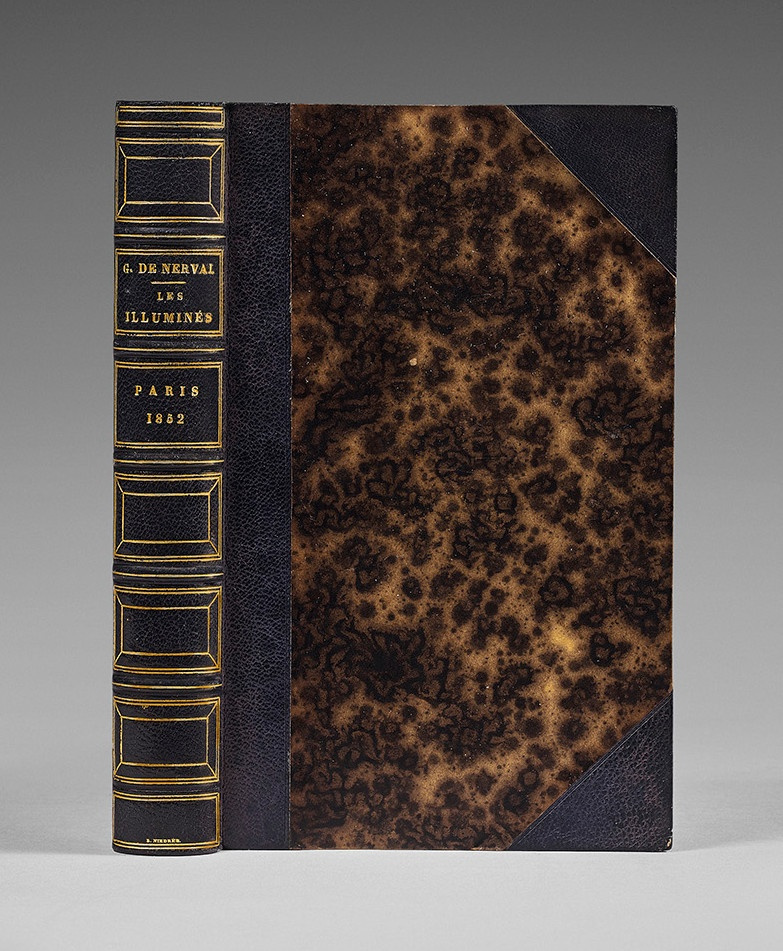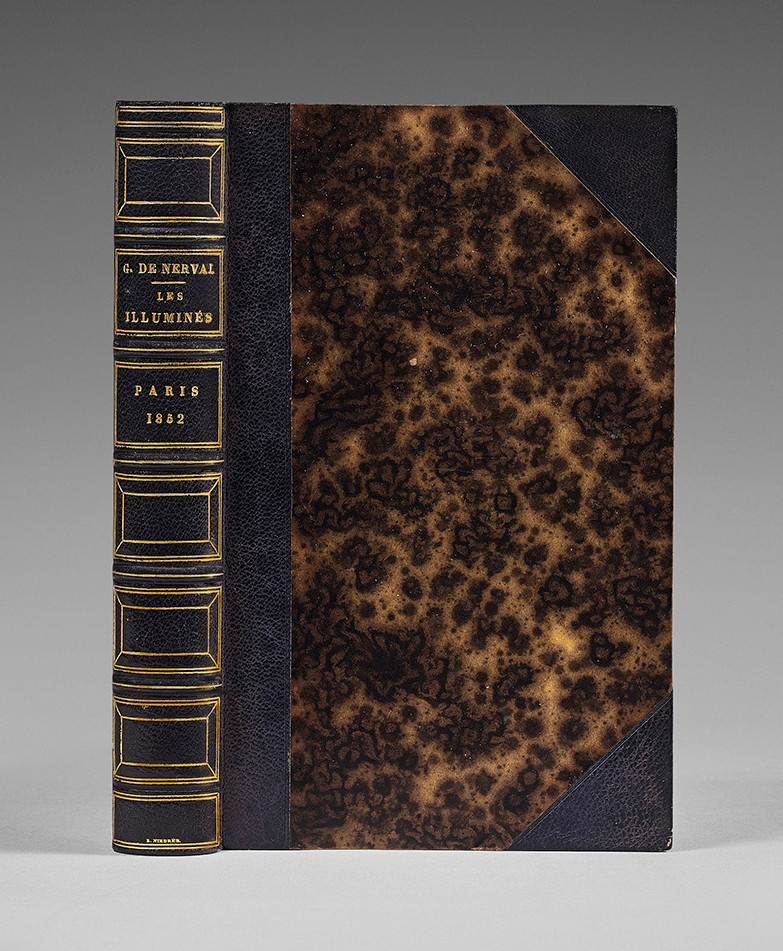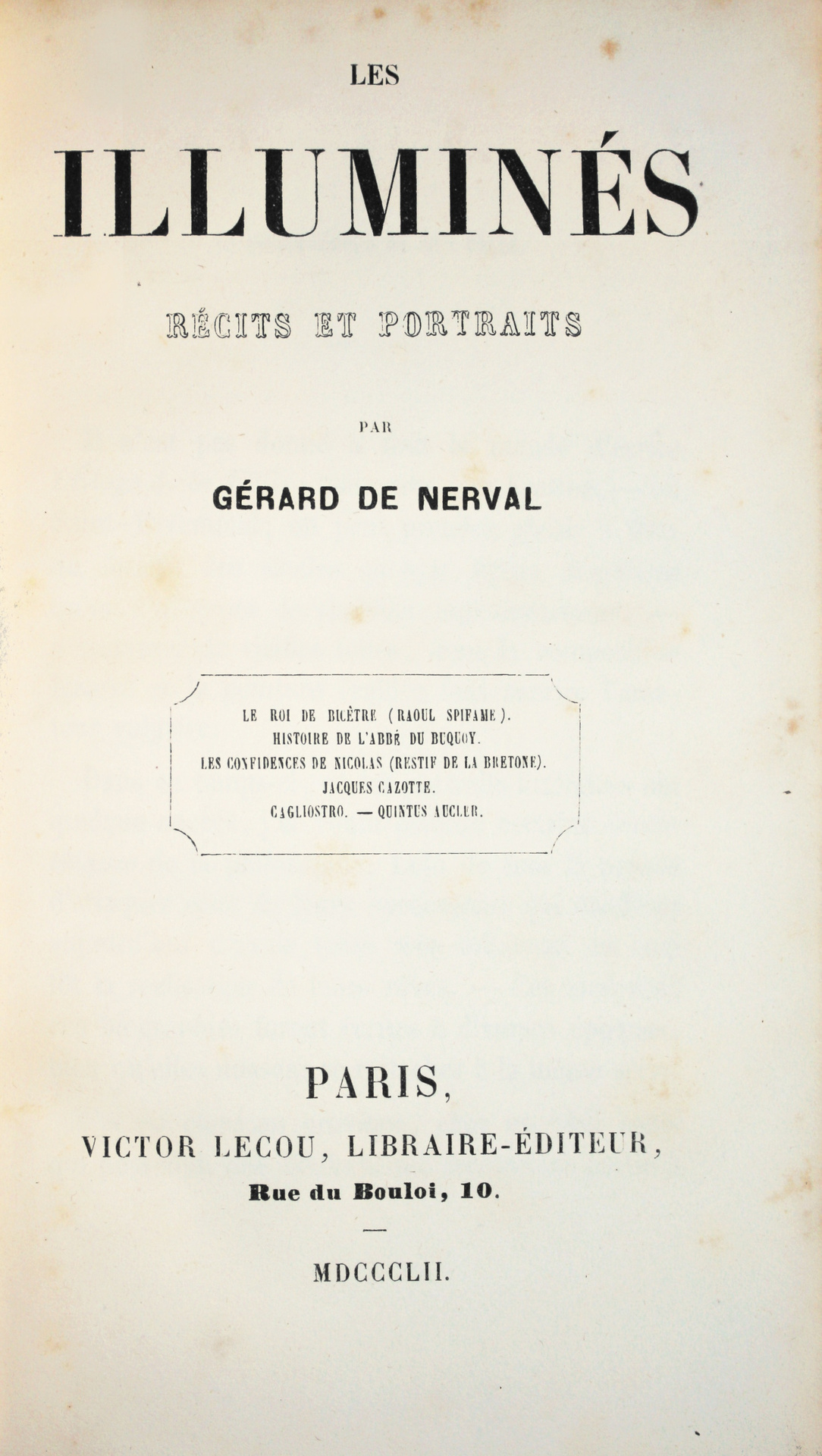Paris, Victor Lecou, 1852.
12mo [176 x 111 mm] of vii pp., 354 pp., (1) l. of table. A few minor foxing. Quarter-blue morocco, ribbed and decorated spine. Contemporary binding signed E. Niedrée.
Precious first edition of this “uncommon and sought-after” work by Nerval. (Clouzot, p. 223).
Vicaire, IV, 57; Carteret, II, 219 (who doesn’t mention any copy in a signed contemporary binding).
This first edition contains the portraits of Raoul Spifame King of Bicêtre, of the Abbot de Bucquoy, of Cazotte, Cagliostro, Quintus Aucler and also above all, that of Restif de la Bretonne with whom Nerval had partly identified his fate: as Restif, Nerval was a foreman in a printing company, he fell in love with an actress who became his idol, he adopted the theory of similarities and that of the transmigration of souls.
“Work of Gérard de Nerval (1808-1855), published in 1852 by Victor Lecou. This gallery of portraits of illuminists is the gathering of articles, published in magazines at different periods. These notorious eccentrics, crazy, inspired, pseudo-mystical, ‘precursors of socialism’ (it was the intended subtitle of the book), some of which are close to Nerval, the author does not follow them blindly and keeps from losing his irony. Some critics have even seen in the ‘Illuminés’ a formal condemnation of this disêse of the mind which raged towards the end of the 18th century […]
The nostalgia of the old Christian faith is shown in the ‘Illuminés’ and the regret that the Renaissance and the Revolution brought to this faith terrible blows: not that Nerval shows any hope of seeing a victorious return of Christianity. There is only here a sad affection, the same that Barres will testify about these things, the simply human wish of ‘clinging with têrs and prayers to the bloody feet of this Christ detached from the mystical tree, to the innocent dress of this Virgin Mary, supreme expression of the ancient alliance of hêven and êrth, the last kiss of the divine spirit that cries and flies away”. (Dictionnaire des Œuvres, III, 672).
Precious copy preserved in its fine contemporary signed binding, a very rare condition for this sought-after first edition.
The binder Jên-Edouard Niedrée worked from 1836 to 1864.




